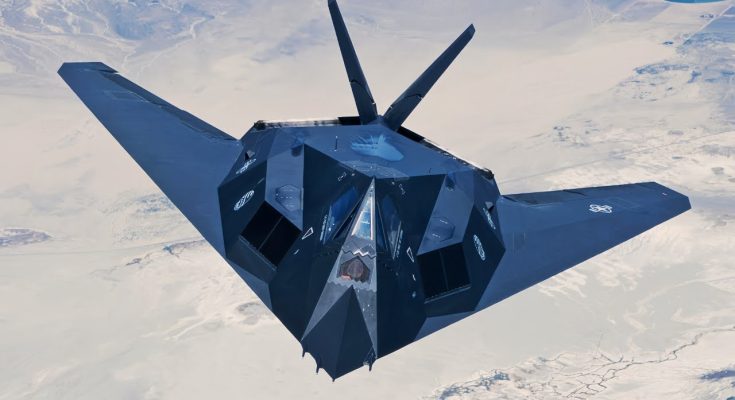The F-117 Nighthawk, developed by Lockheed Martin’s Skunk Works division, is one of the most iconic and groundbreaking aircraft in the history of modern warfare. Introduced in the 1980s, the F-117 was the first operational aircraft designed around the principles of stealth technology. Its development and eventual deployment had a profound impact on the evolution of stealth technology, setting the stage for subsequent innovations in military aviation.
Stealth technology, often referred to as “low observable technology,” is a collection of design features and materials that reduce the radar signature of an aircraft, making it more difficult to detect. The F-117 Nighthawk was designed with these principles in mind, using a combination of angular surfaces, radar-absorbing materials, and advanced avionics to minimize its visibility to enemy radar systems. Its unconventional, faceted shape, which resembled a flat, sharp-edged polygon, was a radical departure from traditional aircraft designs, and it became a defining characteristic of stealth aircraft.
The F-117’s impact on stealth technology was multifaceted. One of the most significant contributions was its validation of the concept of stealth in combat. Before the F-117, the idea of a truly radar-evading aircraft was largely theoretical. Many skeptics doubted whether such technology was feasible, particularly for frontline combat aircraft. The F-117 proved that stealth could be effectively implemented in a real-world military platform, demonstrating the potential of radar-evading designs in reducing an aircraft’s vulnerability to enemy detection.
The F-117’s first combat use came during the Gulf War in 1991, where it flew numerous successful missions, primarily in precision strike operations. It was used to target high-value infrastructure and enemy command and control centers, often at night. The Nighthawk’s ability to avoid detection by radar allowed it to operate with relative impunity, striking targets with high accuracy while minimizing the risk of enemy interceptors or surface-to-air missiles.
Despite its success, the F-117 was not without limitations. Its design, while revolutionary, was not without trade-offs. The aircraft’s faceted shape made it difficult to maneuver at high speeds, and its radar-evading capabilities were primarily effective against certain radar frequencies. The F-117 was also relatively slow compared to other fighter aircraft, and its reliance on low-altitude flight made it vulnerable to ground-based defenses. Nonetheless, these shortcomings did not overshadow its contributions to the stealth revolution.
The F-117’s success in combat led to rapid advances in stealth technology in the years that followed. It influenced the design of subsequent aircraft, such as the F-22 Raptor and the B-2 Spirit, which incorporated even more advanced stealth features. These later designs built upon the lessons learned from the F-117, refining the principles of stealth to create more capable, multi-role aircraft. For example, the F-22 integrated stealth with advanced maneuverability and supercruise capabilities, while the B-2 took stealth to new levels with its flying wing design.
The F-117 also sparked an increased interest in developing stealth technology for a variety of other platforms, including unmanned aerial vehicles (UAVs) and naval ships. Its success demonstrated the viability of stealth as a critical advantage in modern warfare, influencing both military strategy and the future development of defense technologies.
In conclusion, the F-117 Nighthawk was a pioneering aircraft that had a profound impact on the development of stealth technology. It proved the effectiveness of radar-evading designs in combat, and its influence can still be seen in the advanced stealth aircraft that have followed. While its service was eventually retired in 2008, the F-117 remains an important milestone in the history of military aviation and continues to shape the way modern air forces approach stealth and combat operations.



